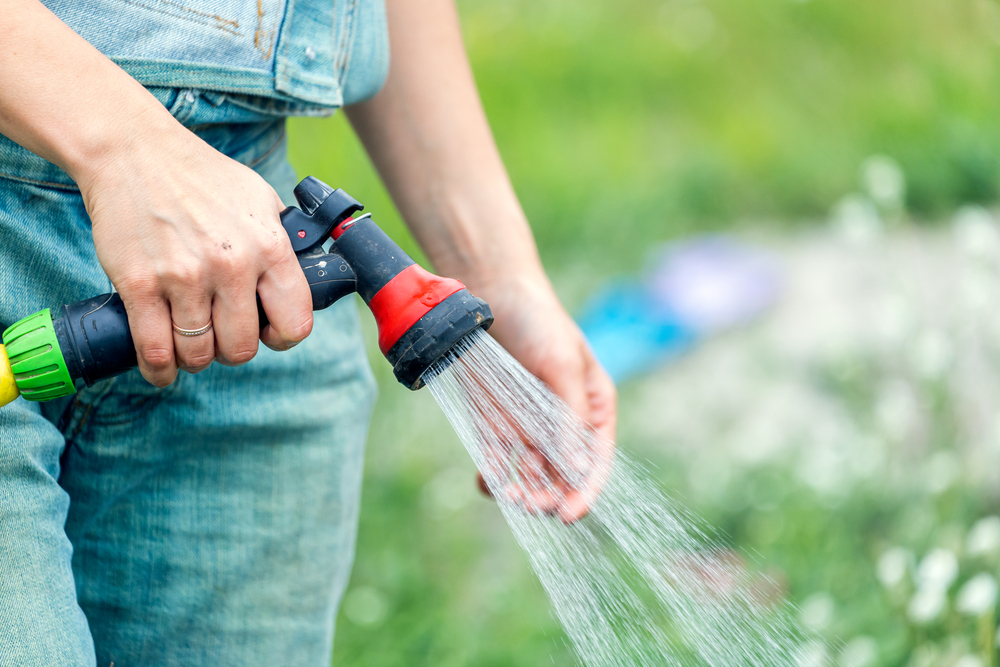For a lawn to be healthy and happy, water is necessary. However, it’s crucial to make sure you water it correctly. For instance, running a sprinkler at night creates the ideal environment for illness to spread. If you water your lawn too little, the roots won’t develop deeply enough, leaving your lawn vulnerable to problems when the weather gets hot.
For a hydrated lawn, follow these instructions.
Lawn Watering Schedule
Your grass is trying to inform you that it needs water if it has a grey hue or looks dull green. Additionally, you can inspect your grass by walking on it: If your footsteps don’t erase right away, the grass doesn’t have the moisture it needs to recover. Even while it can appear like you can water your grass whenever you want during the day, your lawn actually requires more specialized care. The optimum time to water your lawn is in the early morning (before 10 a.m.) when it’s cooler and the breezes are usually calmer, allowing the water to penetrate into the soil and be absorbed by the grassroots before it can evaporate. Try watering between 4 and 6 p.m. if you have to water in the evening because this should allow the grass time to dry before dusk. The likelihood of illness spreading throughout your grass increases as watering time passes. It’s important to remember, though, that you are not required to water your lawn. Lawns are durable. In order to survive weeks without water, established and well-maintained lawns go dormant (when the grass turns brown), then bounce back once the rain starts to fall again.
How Much Water Should You Use?
It is usually advised to water an established lawn until the top 6 to 8 inches of soil (where the majority of turfgrass roots develop) are moist. To soak the soil so deeply, most lawns require 1 to 1.5 inches of water every week, either from rain or irrigation. That much water can either be used in a single watering or spread out over two waterings during the course of the week. Do not overwater your yard, though.
How to Assess Your Watering Level
Examine the soil
Using a screwdriver to measure the depth of the water, examine the soil every 15 minutes during your initial watering to determine how long it will take to soak the soil. You should water your grass for the designated amount of time each time once the soil has been soaked to a depth of at least 6 inches. You’re pressed for time and merely want to know if you can forgo watering today. Use this rule of thumb: Water your plants if you can’t readily stab a screwdriver six inches into the ground.
Do the Math
If you have a sprinkler system, this is the simplest option because the manufacturer will have the flow rate (in gallons per minute). Simply multiply your lawn’s square footage by 0.62 gallons, or 1 inch of water per square foot, and then divide the result by the sprinkler flow rate. You will learn how many minutes to run your sprinkler system from this.
Use Cans to Measure
Measure the amount of time it takes for a clean, empty tuna can to fill with 1 to 1.5 inches of water by placing some in various locations over the lawn. Use the average amount of time it takes to fill all the cans since sprinkler coverage patterns may differ across the lawn.
Use a Flow Timer (or Water Timer)
Select a timer that records water flow in tens of thousands of gallons. To get the total number of gallons required for your entire lawn, multiply the square footage of your lawn by 0.62 gallons (equivalent to an inch of water per square foot).
You could start to notice that your grass isn’t absorbing water as rapidly as it should when you water it. Try watering in shorter cycles until the required time to apply the necessary volume of water is met if you discover that puddling happens whenever you water (for example, 10 minutes on, 10 minutes off, 10 minutes on, etc.).
Watering Various Forms of Lawns
Don’t just rely on Mother Nature to water your lawn during the first year of growth, whether it was just planted, sodded, sprigged, or plugged. There should always be extra watering.
The most important thing when watering a freshly seeded lawn is to continuously maintain a moist but not soggy top inch of soil. The seeded area will probably require misting once or twice daily (perhaps more if the weather is hot and dry). Once the seeds have begun to sprout, keep the top 2 inches of soil moist until the new grass is about 3 inches tall and ready for mowing. After that, start reducing watering to twice weekly and soaking the soil for 6 to 8 inches to help the grass roots to penetrate the soil deeply.
Conclusion
Knowing when to water your lawn is key in the upkeep of it. Contact us for your next landscaping project!

